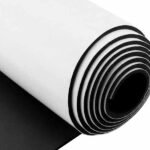Imagine plunging into crystal-clear waters, only to have your hands go numb within minutes. Freezing fingers can turn any aquatic adventure into a teeth-chattering ordeal—but wetsuit gloves are designed to change that.
Wetsuit gloves are neoprene or hybrid-material hand coverings that trap a thin layer of water, which your body heats to provide insulation—allowing divers, surfers, and paddlers to stay warm and maintain dexterity in cold water.
Picture this: legend has it that a team of Antarctic scientists once dove beneath an iceberg armed only with bare hands—and almost had to abort their mission 10 minutes in. They returned equipped with 5 mm neoprene gloves and extended their underwater research time by over an hour. Ready to dive into the science, styles, and secrets of wetsuit gloves? Let’s suit up and explore.
What Are Wetsuit Gloves?

Wetsuit gloves are insulating hand coverings made of neoprene or hybrid fabrics. They seal around your wrists, trap a layer of water, and use body heat to keep hands warm—crucial for cold-water activities and extended immersion.
- Anatomy of a Wetsuit Glove: Seams, wrist seals, and palm reinforcements
- Open-Cell vs. Closed-Cell Neoprene: How surface texture affects warmth and fit
- Hybrid Constructions: Incorporating spandex, nylon, or thermal linings
- User Case Study: Electrician-divers vs. coral photographers—different glove needs
Why Do Wetsuits Come with Gloves?

Wetsuit gloves are integrated to protect extremities from heat loss, abrasions, and cold-water shock—ensuring overall thermal balance and extending safe dive times by up to 50%.
- Thermal Balance: Hands lose heat 5× faster than the torso
- Protective Barrier: Against barnacles, coral cuts, and gear chafing
- Performance Impact: Cold hands reduce grip strength by 30%
- Historical Note: The first scuba pioneers experimented with wool mittens—see how neoprene revolutionized warmth
What Are Neoprene Gloves Used For?
Beyond diving, neoprene gloves serve surfers, kayakers, windsurfers, and water-based workers—providing insulation, grip, and wrist support in temperatures from 8 °C down to sub-freezing.
- Surfing & Paddle Sports: Shore breaks and spray decks
- Industrial & Rescue: Lifeguards, offshore oil rigs, and marine construction
- Recreational Fishing: Cold-water rods and reel control
- Medical & Scientific Research: Long-term sample collection in cold seas
Which Materials Are Commonly Used in Wetsuit Gloves?

Most gloves use neoprene thicknesses from 2 mm to 7 mm, combined with nylon or spandex liners and reinforced palms of silicone or textured rubber for grip and durability.
- Neoprene Grades: Yamamoto 39 vs. standard SBR properties
- Liners & Coatings: Thermal fleece, X-SPAN, or glued/blind-stitched seams
- Reinforcements: Supratex palms, Kevlar® patches for heavy-use models
- Eco-Options: Limestone-based neoprene and water-based adhesives
How Thick Should My Wetsuit Gloves Be?
Choose thickness by water temperature: 2–3 mm for 15–20 °C, 4–5 mm for 10–15 °C, and 6–7 mm for below 10 °C—balancing warmth with hand mobility.
Temperature Guide Table
| Water Temp (°C) | Glove Thickness (mm) | Expected Warmth Rating |
|---|---|---|
| 15–20 | 2–3 | Mild |
| 10–15 | 4–5 | Moderate |
| 5–10 | 6–7 | High |
| <5 | 7+ | Extreme |
- Dexterity Trade-Off: Each extra millimeter reduces finger flexibility by ~12%
- Layering Tricks: Silk liners under 5 mm gloves for extra warmth without bulk
- Specialty Picks: 7 mm split-finger gloves for winter surfing
How Tight Should Wetsuit Gloves Be?
Gloves should fit snugly—no air pockets—but not so tight that circulation is cut off. Aim for 0–1 cm stretch when fingers are fully extended.
- Fit Checklist: No loose bunching, full wrist seal, fingertip coverage
- Sizing Tips: Measure palm circumference and hand length
- Common Fit Issues: “Baggy pouch” near palm—what it means
- User Hacks: Heat-forming gloves in warm water for customized fit
Do Neoprene Gloves Keep You Warm?
Yes—neoprene traps a layer of water against the skin, which your body heats. Proper thickness and fit can retain up to 80% of hand warmth in chilly conditions.
- Thermal Conductivity Data: Neoprene vs. water (0.2 vs. 0.6 W/m·K)
- Heat-Retention Experiments: 5 mm gloves vs. bare hands—a 50-minute divergence
- Wrist Seal Efficacy: Sealed vs. rolled seams—cold flush rates
- Comparisons: Neoprene vs. latex surgical gloves in cold water
When to Wear Wetsuit Gloves?
Wear gloves whenever water falls below 18 °C, for prolonged immersion, or when handling abrasive gear—even in warmer waters if extended sessions or wind chill apply.
- Activity-Based Guide:
- Surfing: >10 min in 14–20 °C
- SCUBA: Always below 18 °C
- Kayaking/Rafting: Spray conditions <20 °C
- Seasonal Planning: Month-by-month glove needs in popular spots
- Regional Variations: Gulf Stream vs. North Atlantic
- Anecdotal Insights: Freedivers vs. commercial divers—glove timing differences
What Are the Best Wetsuit Gloves?

Top gloves balance neoprene grade, seam construction, and palm grip. Leading models include O’Neill Psycho III (5 mm), Xcel Drylock (7 mm), and Szoneier Custom-Cut solutions for tailored fit and branding.
Comparison Table
| Model | Thickness | Seams | Palm Material | Price (USD) |
|---|---|---|---|---|
| O’Neill Psycho III | 5 mm | Blind-Stitch | Supratex | \$65 |
| Xcel Drylock | 7 mm | Liquid-Sealed | X-TEM | \$80 |
| Szoneier Custom Neoprene | 2–7 mm | Glued & Taped | Custom Grip | \$30–\$100 |
- User Reviews: Heat scores, fit feedback, durability ratings
- Brand Comparisons: Mass-market vs. boutique manufacturers
- Custom Options: How Szoneier tailors thickness, logos, and color
Do You Need Wetsuit Gloves?
If you’re in water below 18 °C, doing repetitive hand tasks, or value comfort and safety, gloves are a must. Even mild conditions can sap dexterity and speed.
- Risk Assessment: Cold-water impact on reaction time
- Cost vs. Benefit: \$50 glove saves \$200 in gear damage and discomfort
- Beginner vs. Pro Needs: When novices can skip gloves, and when experts always suit up
- Final Checklist: Activity, temperature, duration, and personal cold tolerance
Ready to Gear Up?
Whether you’re surfing winter swells or diving frigid wrecks, the right wetsuit gloves make all the difference. Contact Szoneier for custom neoprene gloves—choose your thickness, colors, and logo, and get free design and samples in 7–10 days. Stay warm, stay safe, and let Szoneier craft your perfect pair!











